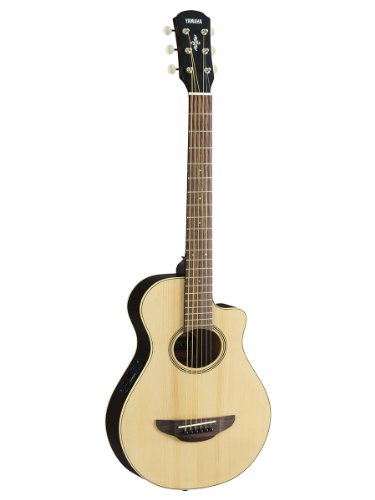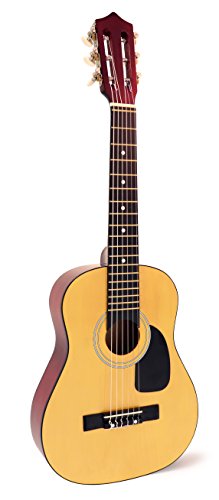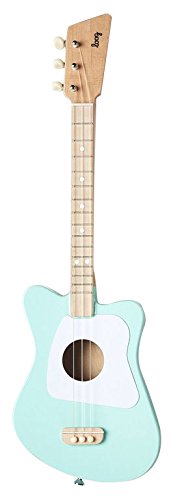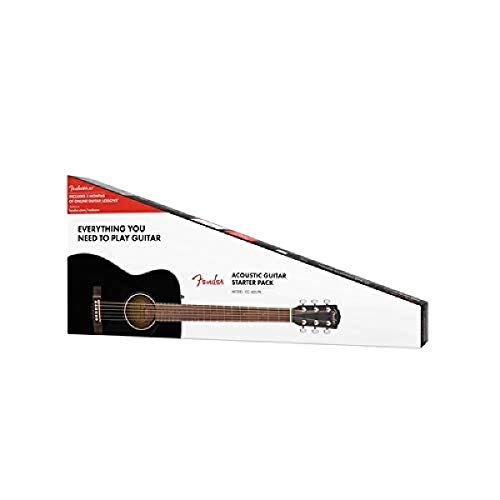9 Best Acoustic Guitars for Kids
Choosing guitars for kids is a big responsibility. With the right one, you can cultivate a lifelong love of music in your youngster. But pick wrong, and you’ll find the guitar cast aside in no time.
So don’t do it alone. Let us help. We’ve done the research and found nine acoustic guitars that are sure to instill passion in any young musician.
Yamaha JR1
The Yamaha JR1 is a ¾-size dreadnought with a short scale and slim neck perfect for the youngster in your life. The spruce top and meranti body give it a classic acoustic sound. Despite its small size, it shows a surprisingly rich resonance and strong projection.
The 9 Best Acoustic Guitars for Kids in 2020
It can be challenging to track down the best acoustic guitars for kids because it’s such a big category. “Kids” can range from a five-year-old plucking their first strings to a teenager recording their first album.
Not to worry. We’ve selected nine great kids guitars, each chosen to meet the particular needs of the young musician in your life. For even more great options, check out our lists of the best guitars for newbies, the best guitars for people with small hands, and the overall best acoustic guitars.
1. Yamaha JR1 - Best Overall
Specifications
Scale length: 21.25”
- Body style: 3/4-sized dreadnought
- Topwood: Spruce
- Back and sides: Meranti
- Electronics: n/a
Yamaha guitars are known for their excellent build quality, great sound, and incredible value, rather than any flashy gimmicks (1). And these are precisely the traits we love in the JR1, our favorite acoustic guitar for kids this year.
The success of Yamaha guitars is influenced more by their reputation for high quality and the outstanding value their instruments offer for the money, than by the usual forms of guitar hero worship that drive many guitar sales.
When getting a guitar for your kid, you want a smart purchase. With Yamaha’s great quality and such reasonable prices, you CANNOT GO WRONG. Their success speaks to that.
The JR1 follows Yamaha’s incredibly popular Folk Guitar (FG) line, but they’ve scaled it down to 3/4 size. The scale is 21.25”, the body depth is less than 4”, and the neck is extra-slim. All this makes for a more comfortable playing experience for smaller guitarists. While it can’t match the full-size FG models’ volume, this guitar produces a surprisingly full and rich acoustic sound. It certainly doesn’t have the tinny quality common in cheap guitars for kids.
As compared with the FG guitars, Yamaha has opted for less expensive laminate tonewoods for the junior model, including a spruce top and meranti body. The result is still a classic acoustic sound, with crisp articulation in the treble notes and strong bass for such a small instrument.
The quality and sound of this guitar are such that even adult players rave about it as a great option for travel or casual play. If you do plan to travel with this guitar, whether on vacation or to and from lessons, you’ll be happy to know you also get a gig bag with it.
Who was it made for? The “JR” mark designates this as a guitar for the younger set. Any child, from pure beginner to relatively experienced, will be well served by this instrument. In fact, with Yamaha’s commitment to quality, this guitar would be suitable for an adult in search of a small-bodied guitar for travel or casual play.
2. Yamaha APXT2 - Runner Up
Specifications
Scale length: 22.84”
- Body style: APX Thinline with a single-cutaway
- Topwood: Spruce
- Back and sides: Meranti
- Electronics: ART-based preamp with System 68 contact pickup
We were so impressed with Yamaha’s 2020 lineup that we chose another one to be our runner up. The APXT2 is an acoustic-electric model, making it a bit pricier than the JR1, but it’s the one to get for a kid who wants to hit the stage or the home recording studio.
The APXT2 is based on Yamaha’s world-famous APX500 acoustic-electric but shrunk to 3/4 size. With a short 22.84” scale and thinline body, this guitar is compact enough to fit comfortably in the child’s arms. That said, it still offers a satisfying amount of projection and volume, which can be further enhanced by plugging into an amp.
The single-cutaway is a nice feature for small hands and arms, as it provides easy access to the upper frets. As compared with the JR1, the neck is slightly wider, which will make it a bit more challenging to maneuver around for kids with tiny hands.
The spruce top and meranti sides and back are both laminated, as might be expected at this price range, but they are of high enough quality to provide a rich and full sound. The spruce provides bright tones and ringing sustain. The meranti is relatively inert from a tone perspective, but it is an inexpensive and structurally sound choice for the rest of the body.
When you want to plug in, the APXT2 has a System 68 contact pickup and an active preamp with Yamaha’s proprietary built-in tuner. Though it’s an entry-level guitar, these electronics are well above entry-level, and beginner players will be more than satisfied with their capabilities.
Who was it made for? The APXT2 is a low-cost acoustic-electric made for any small player, children included, who want the flexibility to plug in their guitar. Its bright sound and quality Yamaha construction make it a great choice for performing or recording, and its scaled-down size and included a padded gig bag make it a great choice for travel as well.
3. Rogue Starter - Budget Pick
Specifications
Scale length: 22.31”
- Body style: 7/8-size dreadnought
- Topwood: Laminated spruce
- Back and sides: Agathis
- Electronics: n/a
Rogue Guitars was founded in the 1990s in Oregon’s Rogue Valley. Their idea was to produce inexpensive guitars for new players without making undue sacrifices to sound quality and manufacturing (2).
With the emphasis on budget prices, these instruments can’t offer the same rich tones or longevity as a more expensive guitar. But for a young player without a trained ear, the Rogue Starter Acoustic is a great introduction to the acoustic guitar. If you aren’t sure your child is going to stick with it and don’t want to drop big bucks on a higher-end model, check it out.
The Rogue Starter Acoustic is a ?-size guitar, which perfectly suits smaller bodies and hands, though perhaps not small enough for the very young. This one would be great for the age 8 to 12 crowd.
Interestingly, there is limited information regarding the tonewoods used in this guitar. We only know that the top is laminated spruce, and the sides and back are agathis, but this is unconfirmed. Regardless, the sound is bright and full, with punchy middles and a strong high end, though lacking a bit of depth in the bass. The maple neck and rosewood fretboard contribute a pleasant tone and are sturdy and comfortable to play.
The build quality is solid. Though the resonance may not match higher-end instruments, it’s undoubtedly impressive at this price range. Rogue Starter comes in six colors, including basic black, natural, and walnut, and more vibrant options like pink, blue bursts, and red bursts. As a bonus, they sell it with excellent Martin strings.
Who was this made for? This small guitar is for novice players who are on a strict budget but still want the look, feel, and sound of a true acoustic guitar. This is the perfect choice for a first guitar if you want to be sure how you feel about the instrument before making a bigger financial investment.
4. Hohner HAG-250P - Best Classical
Specifications
Scale length: 19”
- Body style: 1/2-size parlor
- Topwood: Agathis
- Back and sides: Agathis
- Electronics: n/a
Generally, it’s not recommended that children play classical guitars because they are characterized by wider necks to facilitate fingerstyle play. Wider necks can be quite uncomfortable for small hands, even with soft nylon strings (3). Luckily, there’s an exception to every rule, and Hohner’s 1/2-size parlor guitar is an ideal choice for an aspiring flamenco artist.
The width of the neck at the nut is 1.73”, which is very similar to that of the Yamaha APXT2 above. For comparison, a standard classical guitar typically has a nut width of over 2”. The half-size parlor body is tiny, with a short 19” scale and a slim figure, perfect for a youth player.
For tonewoods, it relies on agathis for the top, back, and sides. Though not a premium tonewood, agathis is a solid choice for excellent sustain and resonance. It contributes a warmth similar to mahogany, but without quite the same richness of tone. The neck is mahogany faced with a select hardwood fretboard, and the hardware is of surprising quality for this price range, with chrome tuners and pearloid keys.
Who was this made for? The classical guitar will inspire not every child, but for those who aspire to that unique fingerstyle play, it will be hard to beat the Hohner HAG-250P. Not only is it affordable, but it’s one of few classical guitars sized adequately for smaller hands and arms.
5. Ibanez PN12E - Best Acoustic-Electric
Specifications
Scale length: 24.41”
- Body style: Parlor
- Topwood: Mahogany
- Back and sides: Mahogany
- Electronics: AEQ-2T Preamp W/ Onboard Tuner
If you’ve got a budding rockstar on your hands, an acoustic-electric guitar is a way to go, and we can’t stop raving about this affordable little model from Ibanez.
The parlor body size is perfect for a child or a small player. With a shorter scale and slimmer waist compared with a dreadnought, this is a comfortable guitar to wrap your arms around. The PN12E uses only mahogany as a tonewood, which gives it the rich, warm, and full sound characteristic of this wood. The mahogany lends it a classy look, which has been enhanced with a vintage sunburst finish.
Inside, Ibanez uses an X-bracing design, which offers excellent resonance and strong projection, an impressive feat for a smaller guitar. The in-built electronics include an under-saddle pickup and AEQ-2T preamp.
The result is a plugged-in tone that is remarkably good, especially for this price range.
Who was it made for? Though small, parlor guitars aren’t made exclusively for young players, they’re for anyone who enjoys playing with the instrument wrapped close to their body. Kids and adults alike will enjoy the warm sound of this all-mahogany guitar, and its low price tag makes it an excellent choice for a first electric-acoustic guitar.
6. Martin LX1 Little Martin - Best Investment
Specifications
Scale length: 23”
- Body style: Concert
- Topwood: Solid Sitka spruce
- Back and sides: Mahogany pattern HPL
- Electronics: n/a
If you’re willing to spend a little more for a guitar built to last, the Martin LX1 Little Martin is a premium instrument that any child — or adult, for that matter — would be lucky to own. With their high-quality craftsmanship and tonewoods, Martin Guitars is one of the top acoustic guitar manufacturers worldwide.
This steel-string acoustic features the same solid Sitka spruce top found on Martin’s high-end models, which means that it will only sound better with age as the wood opens up. If you’re shopping for a kid who’s sure to stick with it, this guitar will pay for itself by serving them in good stead for years to come.
The spruce top is paired with laminated mahogany sides and back for a rich and nicely balanced tone. The full sound and considerable projection generated by this guitar are a testament to what a small guitar can achieve when manufactured with Martin’s expertise.
The LX1 is Martin’s smallest guitar, and they initially designed it for travel, a purpose it still serves very well. Particularly with a padded gig bag included in the price. But its affordable price tag, impeccable quality, and great sound have led to popularity far beyond the company’s expectations.
Who was it made for? This guitar has a slightly higher price than most others on our list, though still great value for money. Thus, we recommend it for a child who has already shown some enthusiasm for the guitar. With its high-quality Sitka spruce top and top-of-the-line construction, this guitar will age well, making it a great investment for aspiring young musicians.
7. Loog Mini Acoustic - Best First Guitar
Specifications
Scale length: 15.6”
- Body style: Mini
- Topwood: Basswood
- Back and sides: Basswood
- Electronics: n/a
The Loog Mini found its start on Kickstarter, where backers signed up in droves to support this innovative product (4). Loog makes tiny guitars for children as young as three years old, but they still craft them like instruments, not toys.
Unlike most starter instruments, the Loog Mini is made entirely of wood, with basswood used for the top, back, and sides. Its low price is a result of its small size, not cheap manufacture or materials, and it has a beautiful acoustic tone compared with its plastic counterparts. It comes in 6 fun colors, red, green, black, yellow, white, and pink, to inspire any child.
The Loog Mini has three strings, making it easier for young children to learn simple chords and songs and permit a narrow neck to suit tiny hands. It uses soft nylon strings rather than steel. And they’re identical in tuning to the first three strings on a standard guitar, making it easy to progress to a full-size guitar as the child grows.
It’s an overall tiny guitar, with a super-short scale and small body, designed so that young children can hold and play it in the same position as an adult would play a full-size guitar. Of course, it won’t have the sustain or volume of a larger instrument, but that is not its goal.
One of the best features of this guitar is that it comes with flashcards designed to appeal to young learners and an associated app for iOs or Android. They built the app with children in mind, and it turns learning guitar into a fun game. There’s even a songbook where you can learn hits from the Beatles, Bruno Mars, and more.
Who was it made for? This guitar is for children as young as three who are picking up a guitar for the first time. Loog’s founders put an emphasis on making a guitar that’s comfortable to hold and fun to learn, with a cute style no child could resist. If you’ve been thinking about starting your youngster on a plastic ukulele, consider the Loog Mini instead.
8. Fender CC-60S Pack - Best Kit
Specifications
Scale length: 25.3”
- Body style: Concert
- Topwood: Solid spruce
- Back and sides: Laminated mahogany
- Electronics: n/a
If you’re brand-new to the guitar, buying a kit with both the guitar and all the necessary accessories is a great option. It’s more convenient and saves you money. When it comes to entry-level guitar kits, Fender reigns supreme.
The CC-60S Pack comes with a very solid guitar, a strap, picks, extra strings, and a gig bag. But what makes it stand out from the crowd is the 3-month subscription to Fender Play, which provides guitar lessons online (5). Designed specifically for beginners, Fender Play centers on step-by-step video lessons taught by professional instructors.
Any child putting in some effort will be able to master basic songs and chords within those first three months, a great way to stay motivated.
The steel-string CC-60S is a concert guitar with a solid spruce top, a surprise feature in a discount guitar. Moreover, it has laminated mahogany for the sides and back, a nato neck, and a smooth walnut fretboard with rounded edges. The result is an easy-to-play instrument with a nicely balanced tone and rich, ringing resonance. Fender offers a popular version of this kit with a dreadnought guitar, but we love that it’s available with the smaller and more comfortable concert guitar for kids.
Who was it made for? This guitar pack is for anyone exploring acoustic guitar for the first time. Children and smaller players will especially love the size and shape of the concert body. It has everything you need to get started, provides considerable cost savings, and includes the added value of 3 months of online lessons.
9. Taylor Taylor Swift Signature - Best for Aspiring Performers
Specifications
Scale length: 22.75”
- Body style: 3/4-sized dreadnought
- Topwood: Solid Sitka spruce
- Back and sides: Layered sapele
- Electronics: n/a
Taylor Guitar’s Taylor Swift Signature may be the most expensive guitar on our list, but it is an undeniably high-quality instrument that will inspire any child to dream big. Taylor Swift fans will be smitten with this little guitar, and so will anyone who appreciates quality craftsmanship and beautiful tonewoods.
Taylor is one of the biggest names in acoustic guitars. Their upper-end models run to many thousands of dollars. Buying a scaled-down instrument like this one is a great way to experience the quality of a Taylor guitar at a fraction of the cost.
This original Baby Taylor was designed with children in mind, so it has both a small body and an extra-slim neck. It was this guitar that Taylor Swift herself picked up as a young teen beginning her career, and it formed the basis of this signature model (6).
I used to sit in the back seat of the rental car while I was on my radio tour at 16, writing songs on my Baby Taylor guitar. I love the sound, and I love those memories.
Let’s be honest, if this guitar was good for a teenage Taylor Swift, it’s excellent FOR ANYONE.
Baby Taylor has a solid Sitka spruce top and layered sapele sides and back, which gives it a full sound, with a crisp upper end and resonant bass that will only improve as the spruce opens up over time. The back of the guitar is slightly arched, a smart means of getting more sound out of a small-bodied instrument.
Who was it made for? This guitar is for young dreamers, kids who aim to hit the stage, write songs, and mark the music industry. If your child has the skill and ambition to be putting their music out there, whether on YouTube, social media or at a school talent show, treat them to a Taylor guitar.
How to Choose the Best Acoustic Guitar for Kids
With kids, it’s all about getting a guitar that feels good, looks cool, and makes learning fun. When purchasing a guitar for your child, it’s more important to factor in their size, age, and how long they’ve been playing, instead of prioritizing build quality and premium tonewoods.
Keep reading for our best buying tips.
Prioritize a comfortable fit.
Starting a new instrument is easy, but sticking with it is hard. In fact, statistics have shown that only 10% of new guitarists keep going after the first year (7).
There are many reasons for this, but an uncomfortable guitar shouldn’t be one of them. When buying a kid’s guitar, make sure you prioritize choosing the right size and shape over getting the best tonewoods, the fanciest electronics, or the finest craftsmanship.
While the most popular acoustic guitar style is the dreadnought, this relatively large-bodied instrument is rarely suitable for a child under the age of 12. Instead, look for a concert or parlor-style guitar, or scaled-down 1/2 or 3/4 size acoustics. You may need something even tinier for very young children, closer in size to a ukulele (8).
| Common Guitar Shapes and Their Dimensions | ||||
| Shape | Length | Depth | Upper body width | Lower body width |
| Dreadnought | 20” | 4” | 11.5” | 15” |
| Concert | 18” | 4.25” | 10” | 13.5” |
| Parlor | 18.25” | 4” | 9.5” | 13.25” |
Thinline guitars, which are small in-depth, can be another good option, as they allow players with shorter arms to hug the instrument to their body comfortably. Likewise, the inclusion of a cutaway makes it easier for small arms to reach the upper frets (9).
The scale length is the distance between the nut and the saddle of the guitar, and it’s a useful measurement when choosing a guitar for kid. A scale length over 25.4” is considered “long” for an acoustic guitar, and most children will be better off with something shorter.
A shorter scale means:
- The strings require less tension to be in tune, so they’ll be MORE COMFORTABLE FOR LITTLE FINGERS to press down.
- The frets are closer together, so it will be EASIER FOR SMALL HANDS to form complex chords.
Why choose quality tonewoods?
When buying an acoustic guitar for children, the tonewoods’ quality is less important than the guitar’s feel. Few children will be able to distinguish between the sounds of solid versus laminated spruce, but they know which tones they prefer. So make sure you get a guitar they think sounds good (10).
The most common tonewoods are spruce and mahogany. Spruce yields a brighter, punchier sound, with a more crisp and articulate upper register. Mahogany, in contrast, produces a warmer, richer sound with a fuller bass. Often the two are used in combination for a nicely balanced tone.
In guitars designed for young players and beginners, it’s common to see other, less expensive woods. Sapele, nato, nyatoh, and okoume are similar to mahogany in tone, while agathis and meranti contribute little to tone and are mostly used for the structure.
While high-end acoustic guitars rely on solid wood, laminate wood is a perfectly suitable choice for a kid’s guitar. They are less expensive, but they’re more durable and better withstand changes in temperature and humidity.
Are you raising a rock star?
If you’re buying a guitar for a child who aspires to perform or record their music, consider investing in an acoustic-electric guitar, which has electronics built in to plug in to an amplifier or soundboard.
There are plenty of inexpensive guitars with basic electronics that are perfect for young players just starting on their journey. Do keep in mind that acoustic-electric guitars can’t stand up to the same abuse as a cheap acoustic, because the electronics are more vulnerable to damage. So make sure that the child in question is responsible enough to handle it.
Don’t overlook the accessories.
When considering the budget for your guitar, don’t forget about accessories. When buying a guitar for a child, you’re often buying a first guitar, starting from scratch in terms of gear. In this case, guitar kits can offer serious savings.
An included gig bag or hard case is a particularly valuable add-on. Not only are kids renowned for breaking things that aren’t adequately protected, but there’s a good chance the guitar will be on the move a lot, whether that’s to and from lessons, friends’ houses, school talent shows, or camping trips.
For a childrens acoustic guitar, in particular, look for the inclusion of lessons or learning materials. These will save the cost of an in-person instructor, at least at first, and provide valuable motivation to a new player.
FAQs
An average child can handle a full-size guitar by the age of 12. But factors like the child’s height, arm length, and hand size are variable, as are the dimensions defining a full-size guitar.
The best age for a child to learn to play guitar is when he or she has the attention span and muscular control needed, which varies from child to child. Many experts recommend age 6.
A beginner probably should not buy an expensive guitar, because they won’t have the ear to appreciate its quality. However, expensive guitars improve with age, so if you keep playing, you will get your money’s worth.
References
- Gill, C. (2017, January 12). Looking Back on 50 Years of Yamaha Guitars. Retrieved from https://www.guitarworld.com/gear/looking-back-50-years-yamaha-guitars
- Hose, C. (2017, September 15). Information on Rogue Guitars. Retrieved from https://ourpastimes.com/information-on-rogue-guitars-12357117.html
- Ball, E. (2020, February 6). Acoustic vs. Classical Guitar: What are the major differences? Retrieved from http://blog.ernieball.com/strings/acoustic-vs-classical-guitar-what-are-the-major-differences/
- Heater, B. (2019, September 3). Loog launches trio of new educational guitars. Retrieved from https://techcrunch.com/2019/09/03/loog-launches-a-trio-of-new-educational-guitars/
- Fender Musical Instruments Corporation. (2017, July 6). Fender Introduces Digital Learning Platform, Fender Play. Retrieved from https://www.prnewswire.com/news-releases/fender-introduces-digital-learning-platform-fender-play-300483863.html
- The Taylor Swift Baby Taylor. (2019, October 19). Retrieved from https://blog.taylorguitars.com/buyers-resources/the-taylor-swift-baby-taylor
- Constine, J. (2015, September 10). Fender Goes Digital So You Don’t Quit Guitar. Retrieved from https://techcrunch.com/2015/09/10/software-is-eating-rocknroll/
- Owens, J. (n.d.). The Acoustic Body Shapes You Should Know. Retrieved from https://www.fender.com/articles/gear/the-acoustic-body-shapes-you-should-know
- Dablow, A. (2017, July 19). Acoustic Guitar Cutaways vs. Non-Cutaways. Retrieved from https://blog.taylorguitars.com/acoustic-guitar-cutaways-vs-noncutaways
- Hunter, D. (2020, April 8). Tonewood Tutorial: Everything You Need to Know About Tonewoods. Retrieved from https://www.guitarplayer.com/gear/tonewood-tutorial-everything-you-need-to-know-about-tonewoods





